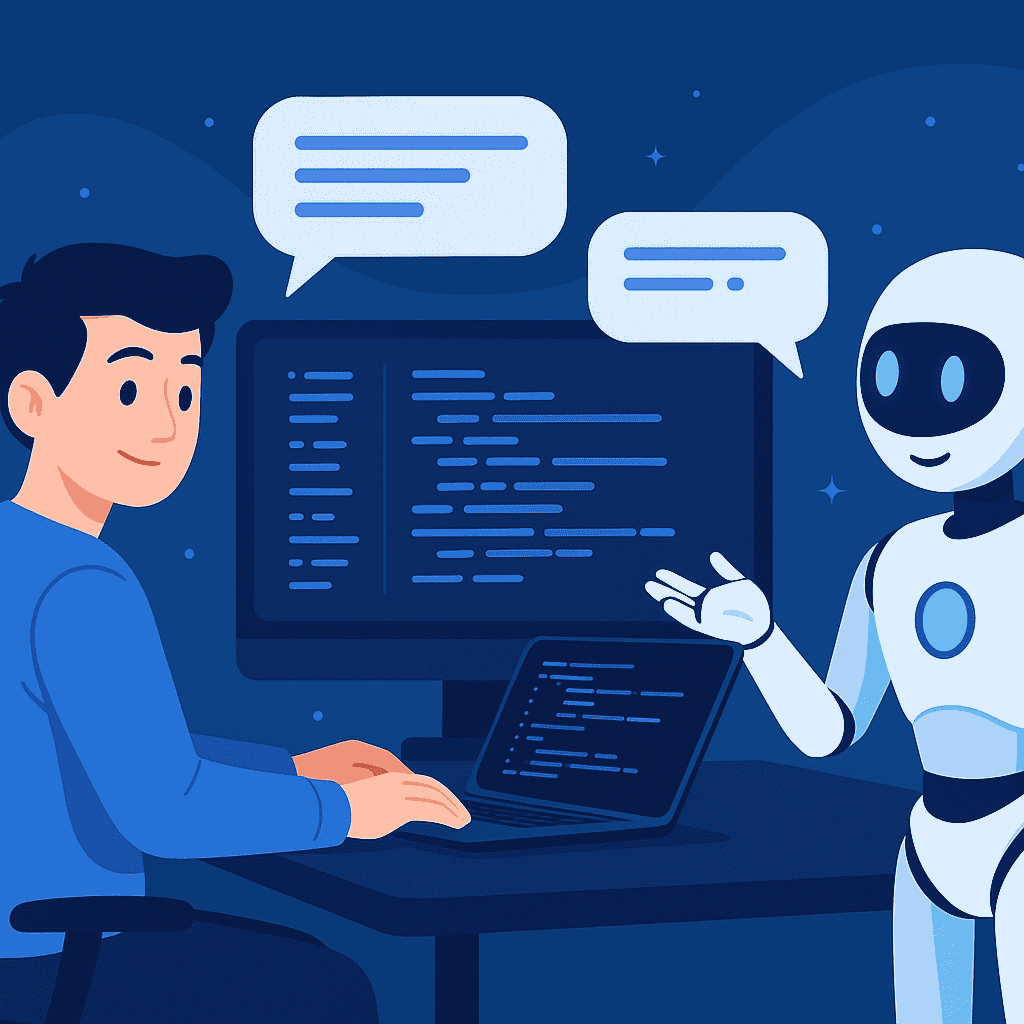
- Posted by : avyaay
- Business Technology
- Software Development
- Tech News
Ride the AI Wave: How “Vibe Coding” Is Redefining Software Development in 2025
In February 2025, Andrej Karpathy—former Tesla AI lead and OpenAI co-founder—introduced a concept that’s rapidly reshaping software development: vibe coding. Unlike traditional coding, which involves methodical planning, manual implementation, and debugging, vibe coding flips the script. It’s a free-flow, AI-driven creative sprint where developers collaborate with LLMs (large language models) as if they were rockstar pair-programmers.
What Is Vibe Coding?
At its core, vibe coding is:
Conversational: Developers use natural language to describe tasks and goals.
Iterative experimentation: The AI generates code, developers test or tweak, and the process loops—fast.
Creative: Developers lean into ideas and prototypes without worrying about perfection.
As Karpathy described, it’s about “fully giving in to the vibes… and forgetting that the code even exists”.
Why It Matters Now
Rapid prototyping: Build working prototypes in minutes—as seen with Karpathy’s demo “MenuGen.”
Lower barrier to entry: Non-programmers can realize software ideas using just natural language.
Productivity booster: Y Combinator reports ~25% of Winter 2025 startups now have codebases that are 95% AI-generated—many adopting vibe coding as a core workflow.
Opportunities & Challenges
Opportunities:
Speed & inspiration: Prototypes emerge rapidly—perfect for proof-of-concept or weekend projects .
Skill democratization: Enables non-developers to engage directly in development cycles.
Challenges:
Code quality risks: Minimal oversight can introduce bugs and security vulnerabilities.
Loss of accountability: Who is responsible for AI-generated code mistakes?
Over-reliance: Relying too much on AI may erode deep programming skills.
Developer Takeaways
Integrate vibe coding thoughtfully: Use it for prototypes, ideation, or exploratory phases—not for mission-critical systems.
Build AI literacy: Equip teams with AI best practices (prompt engineering, validation, testing).
Maintain oversight: Always review and test AI-generated code before deployment.
What’s on the Horizon
With vibe coding gaining traction—ranging from startup sandboxes to enterprise ideation—AI-assisted development is becoming mainstream. But organizations will need to balance creativity with code discipline, ensuring innovation doesn't compromise security or maintainability.
In 2025, vibe coding is more than a novelty—it’s a glimpse into the future of software creation: human + AI in creative harmony. As LLMs continue to improve, so will workflows around conversational prototyping, AI iteration, and hybrid team models.